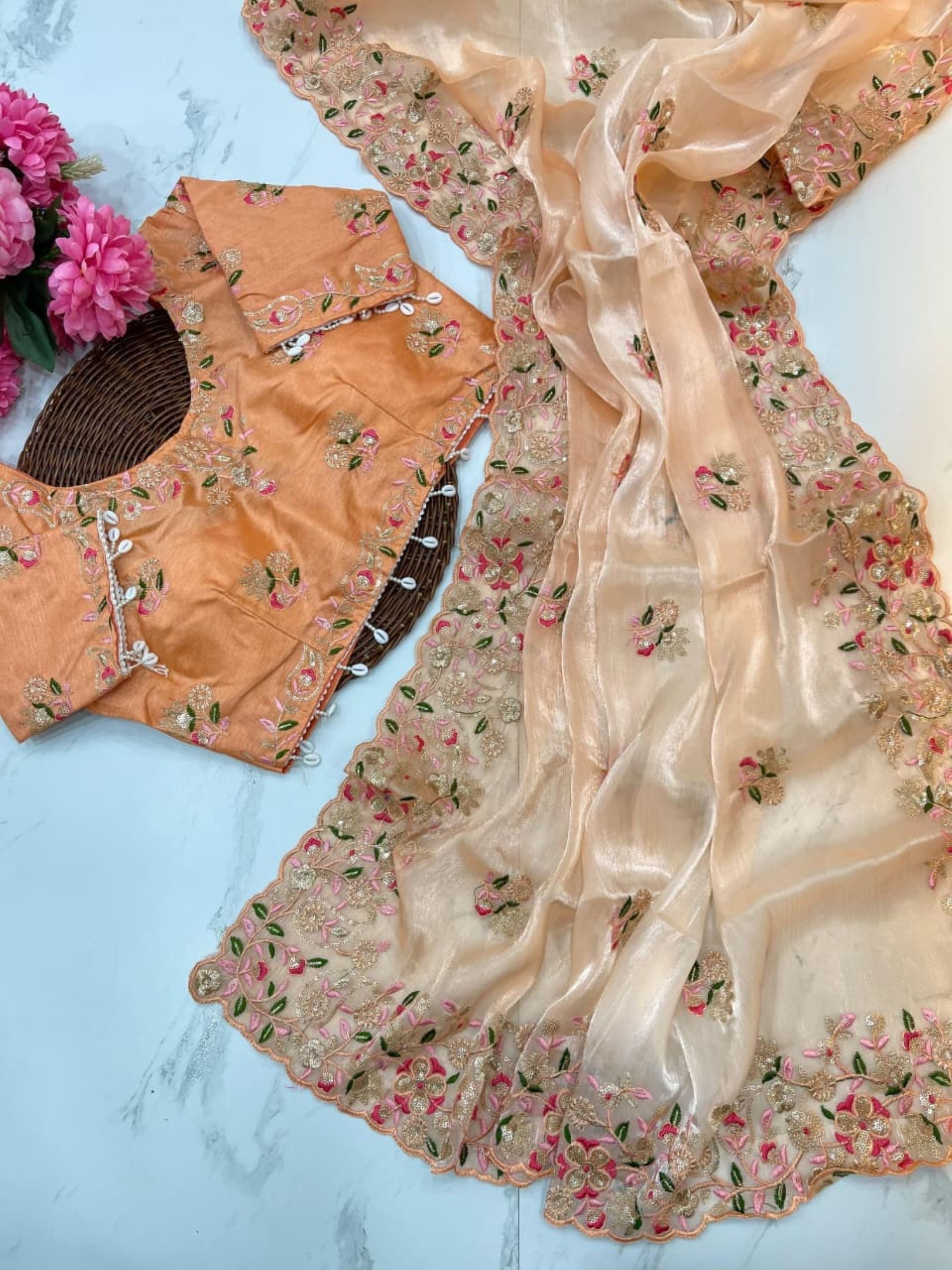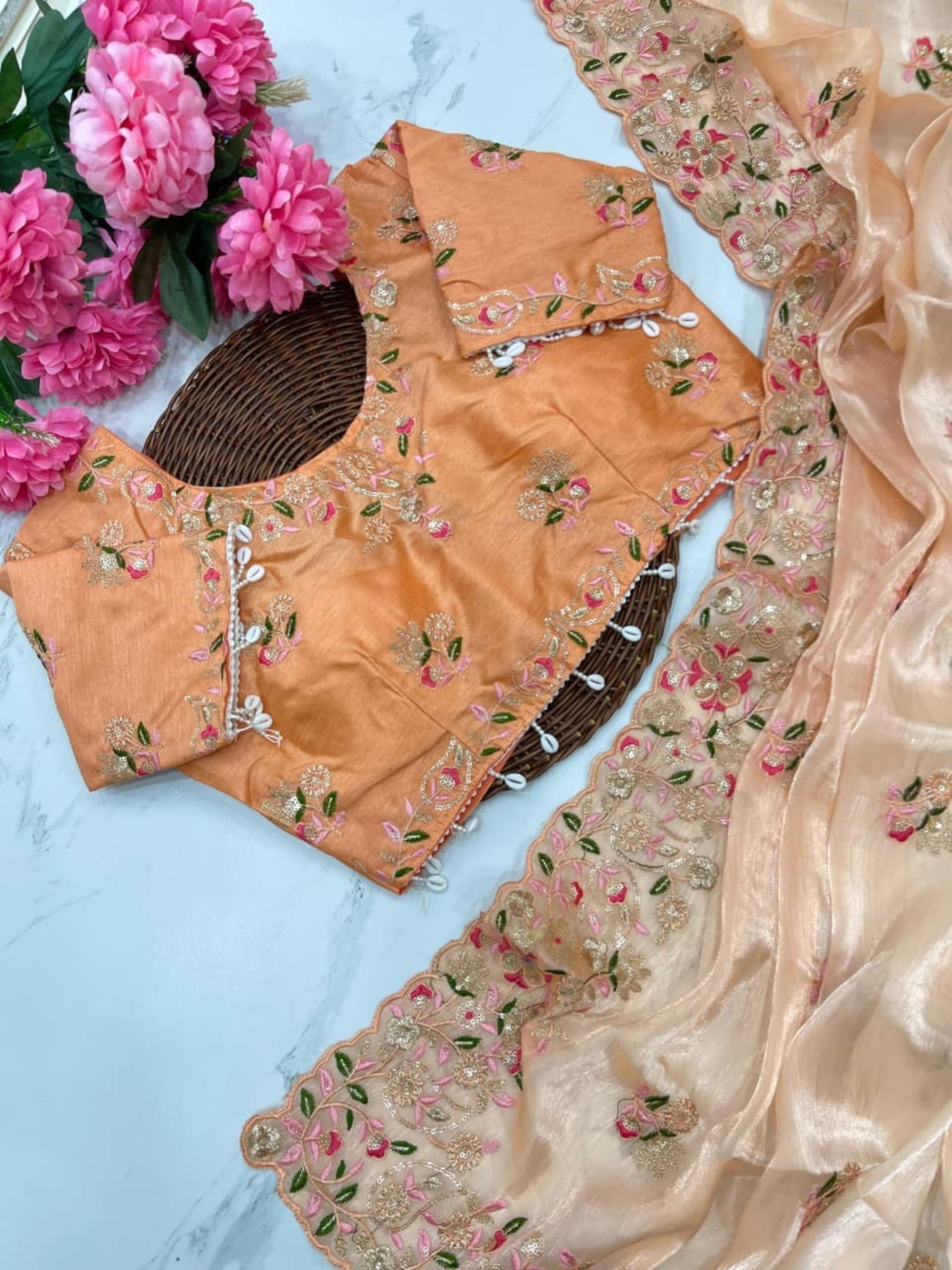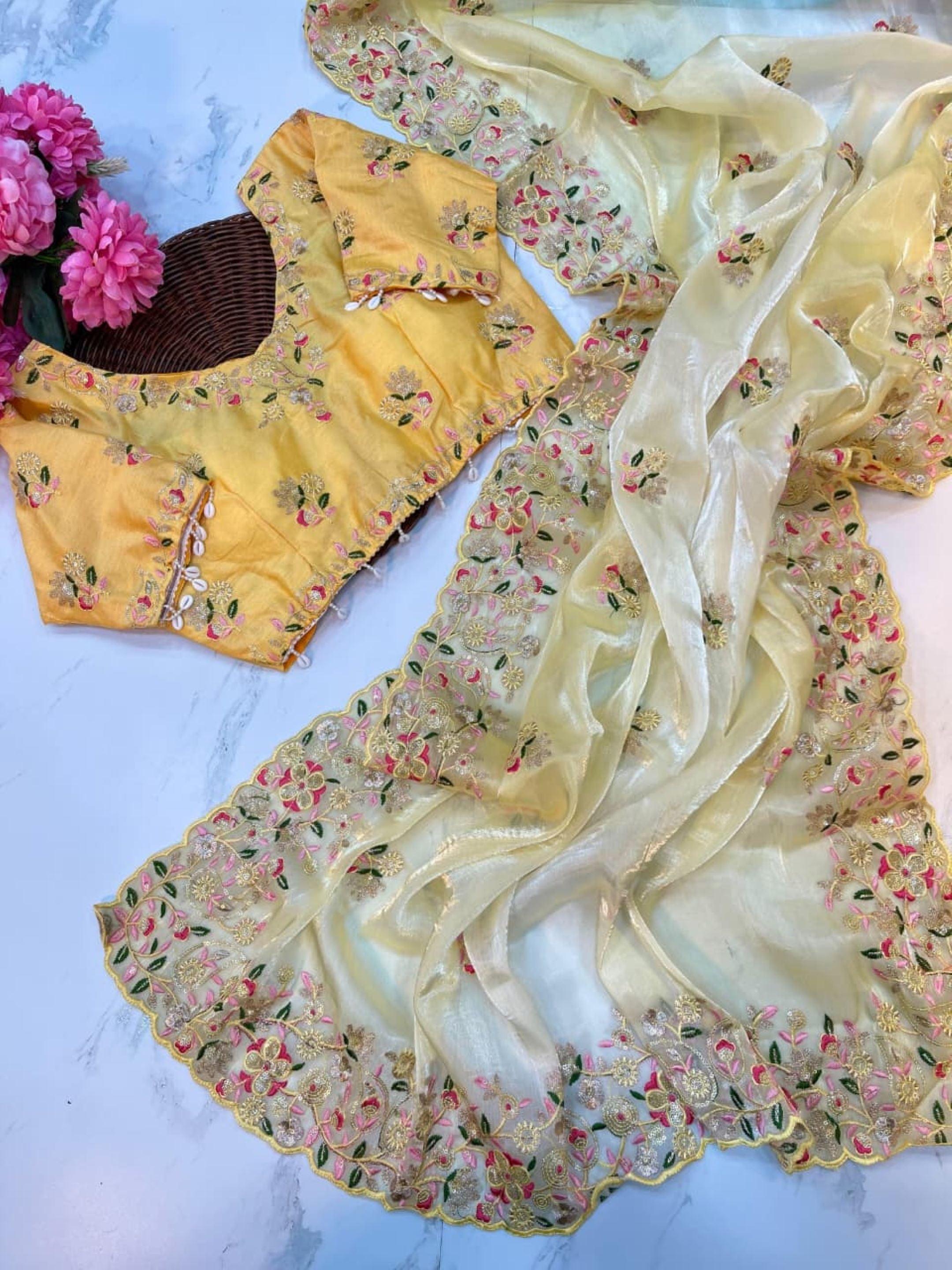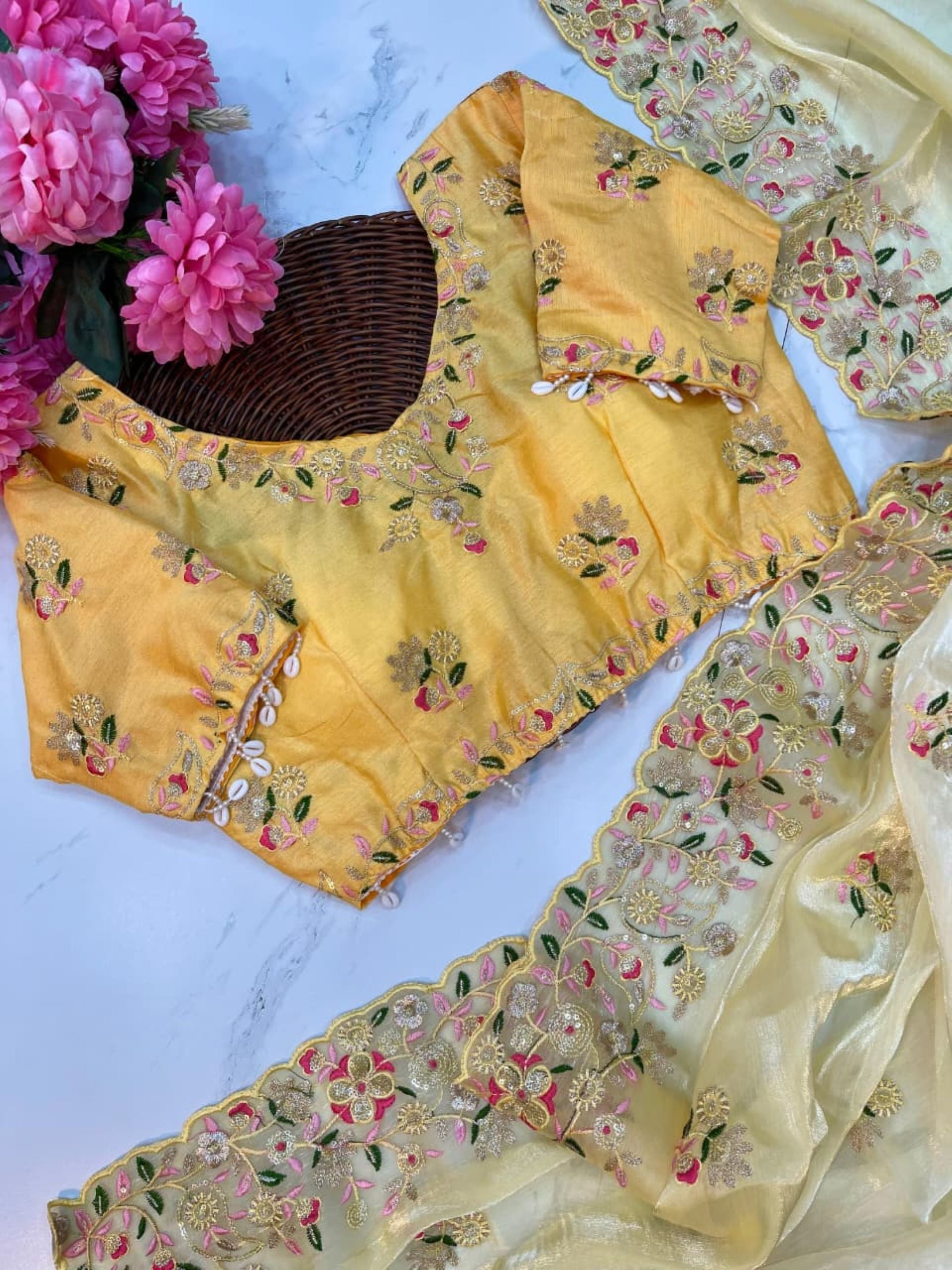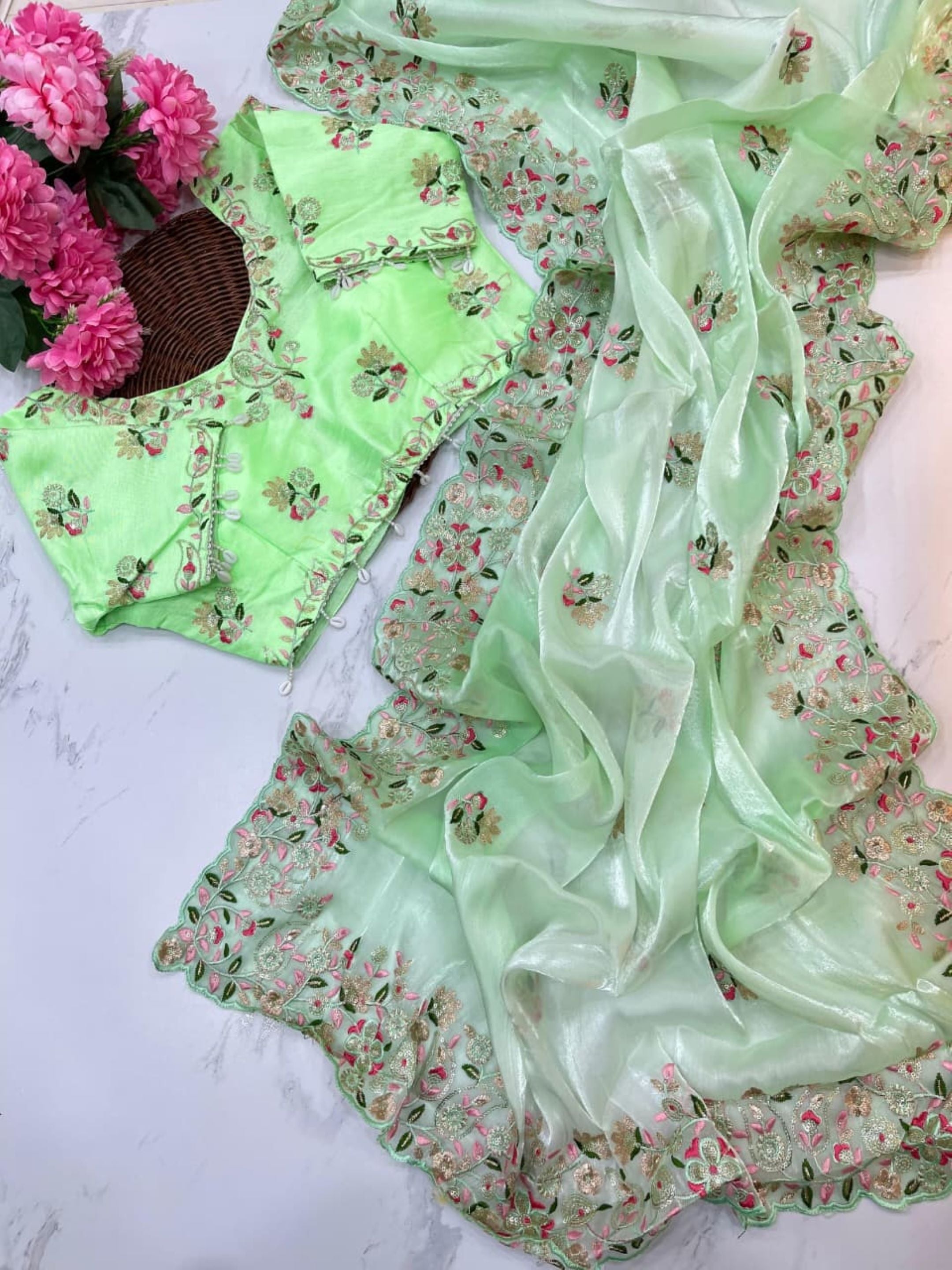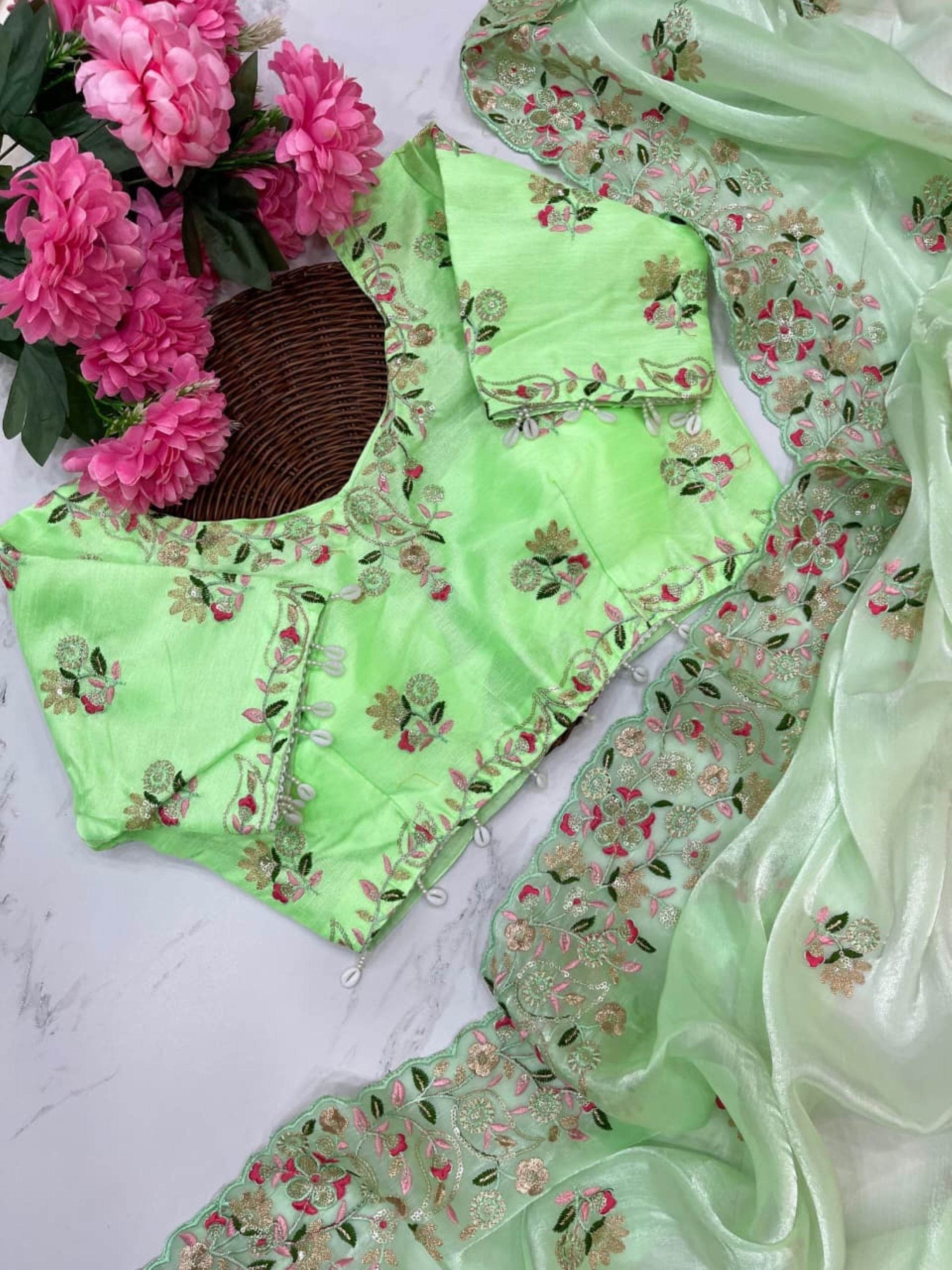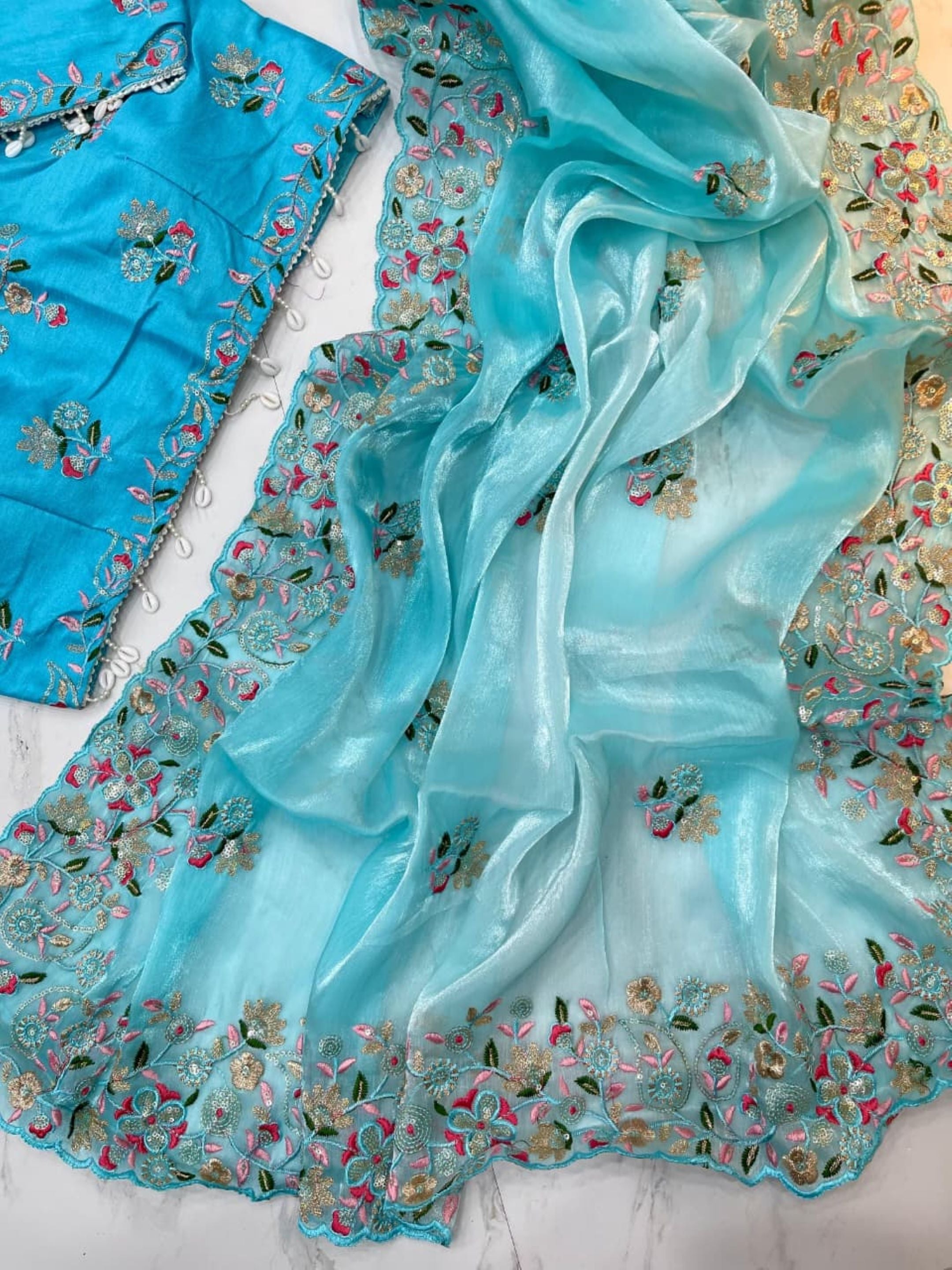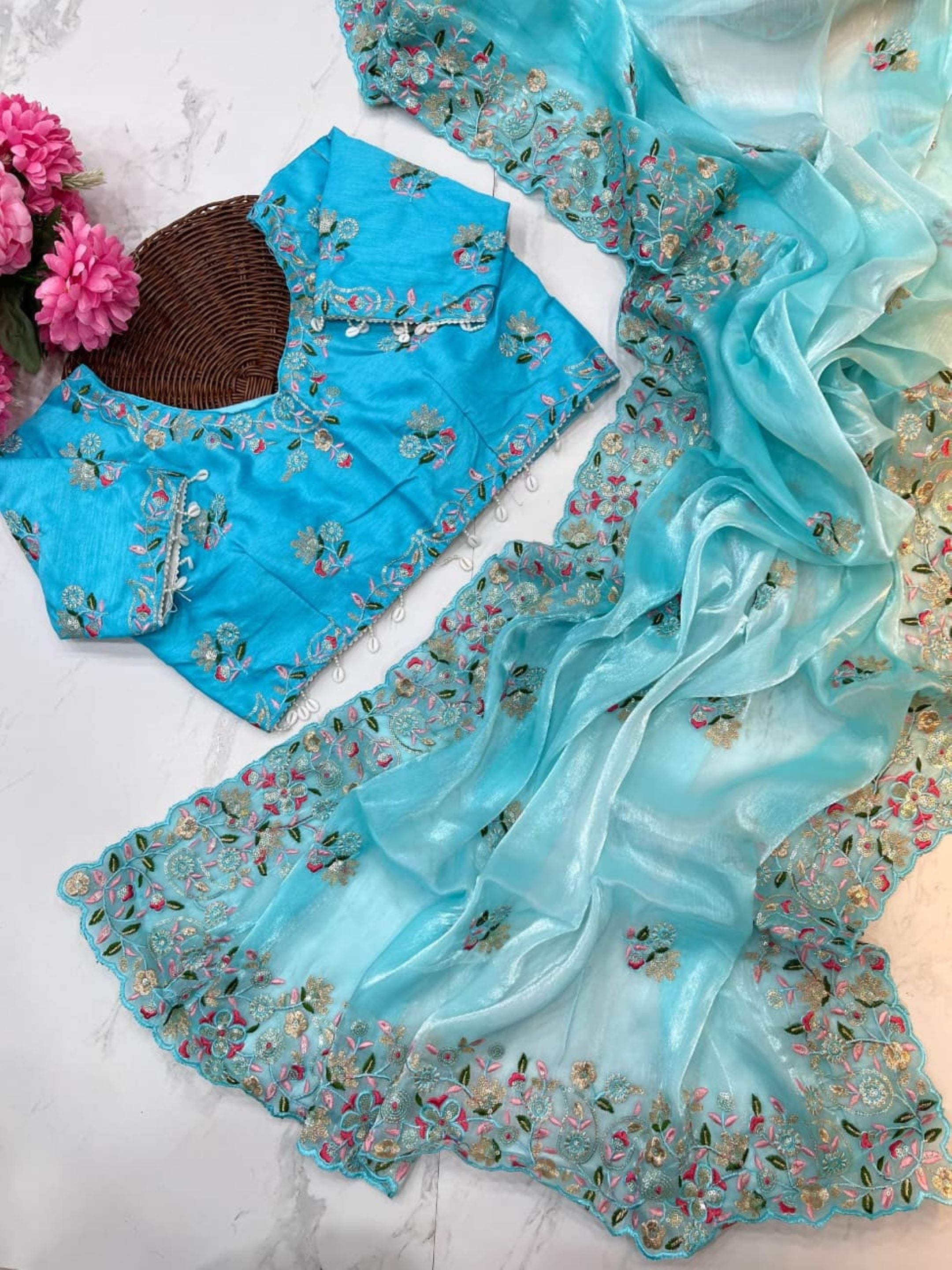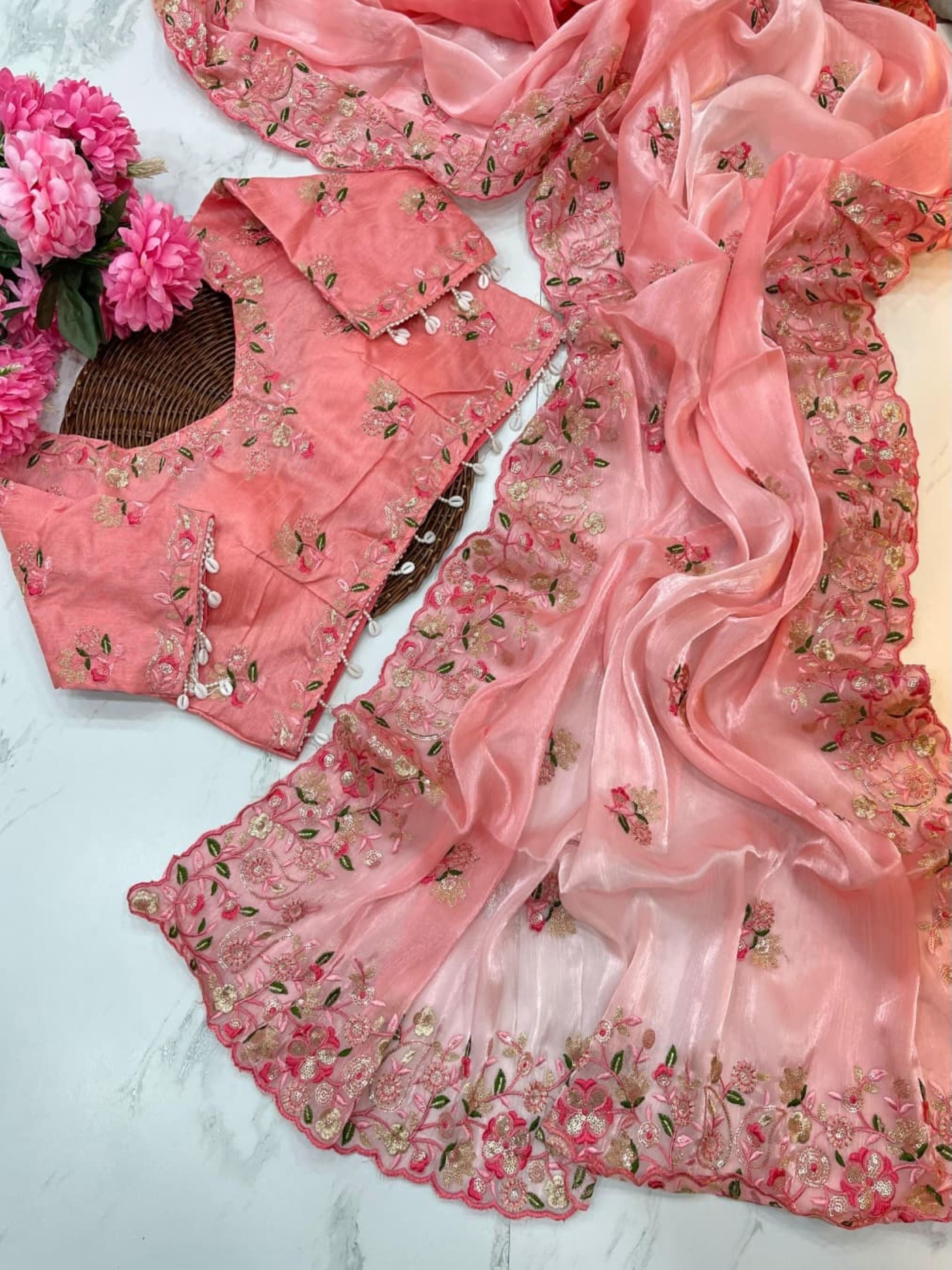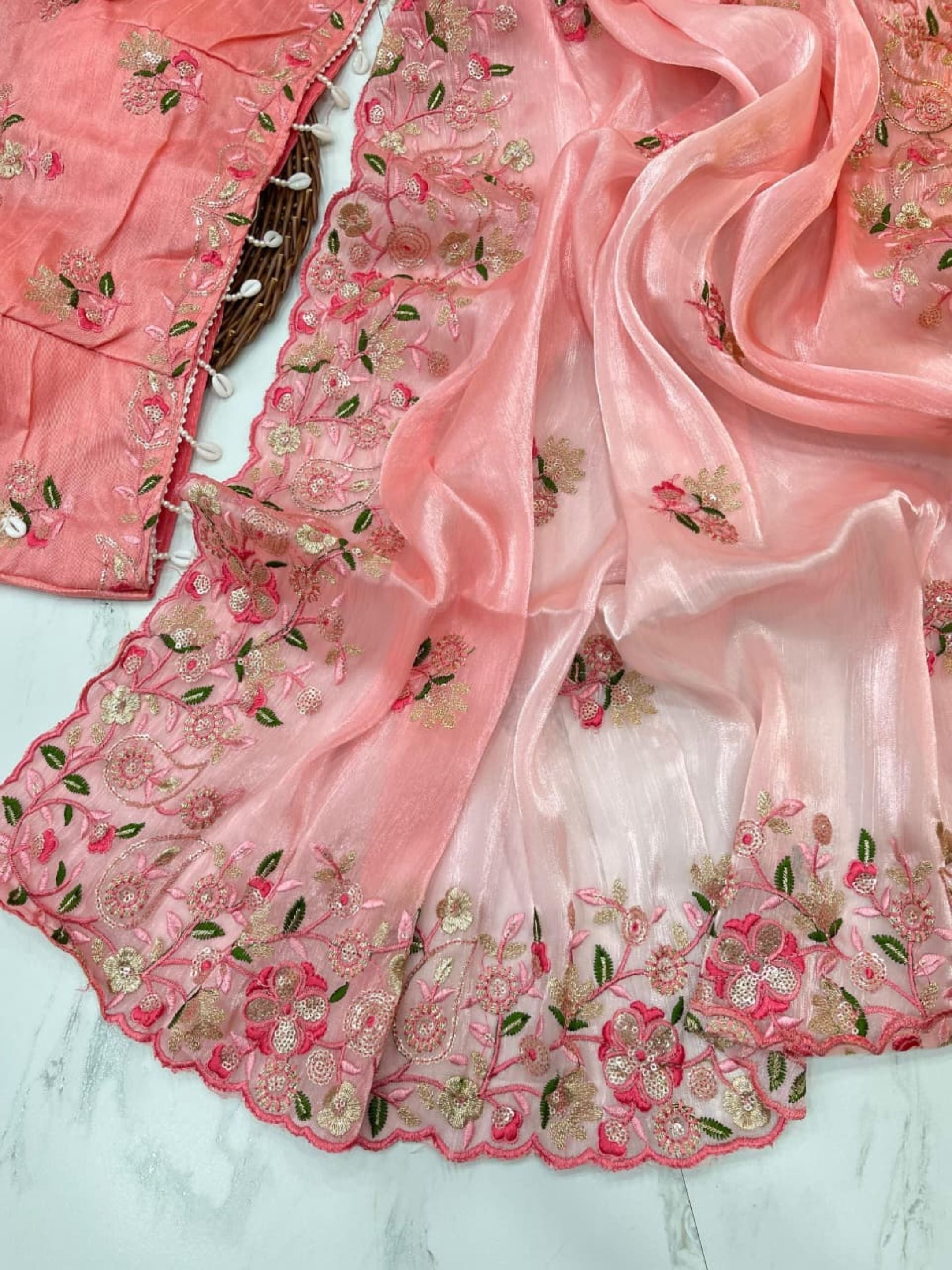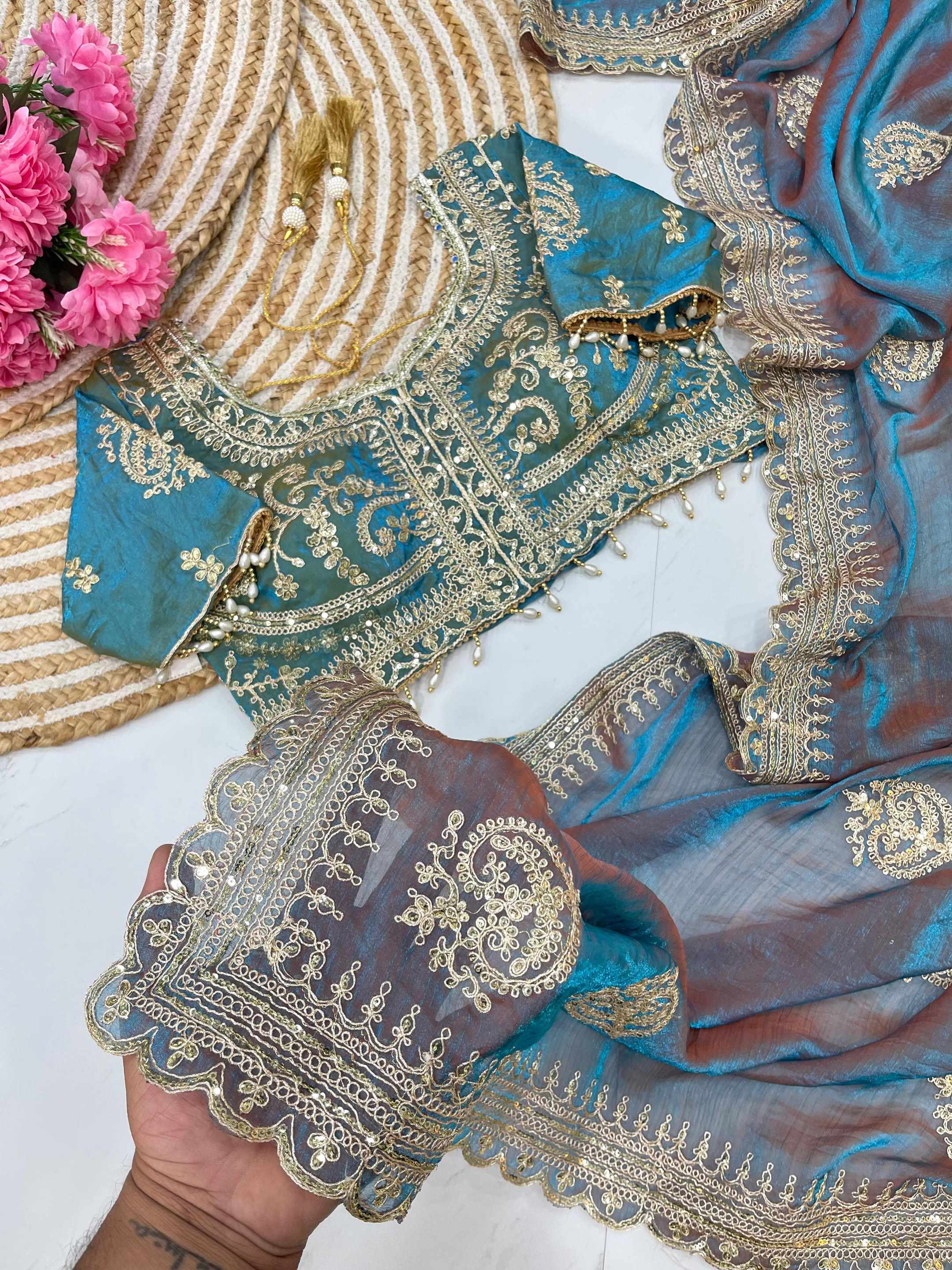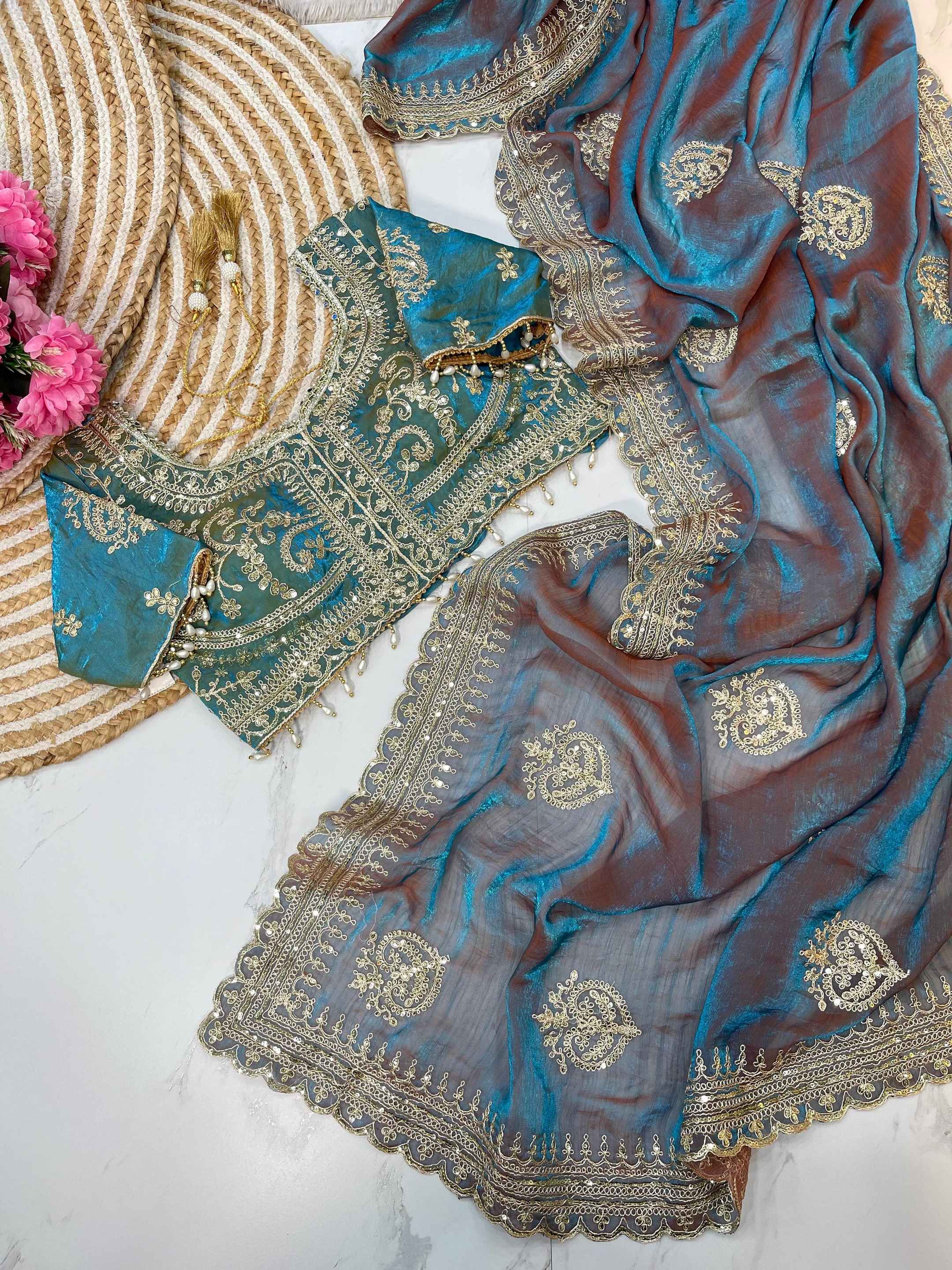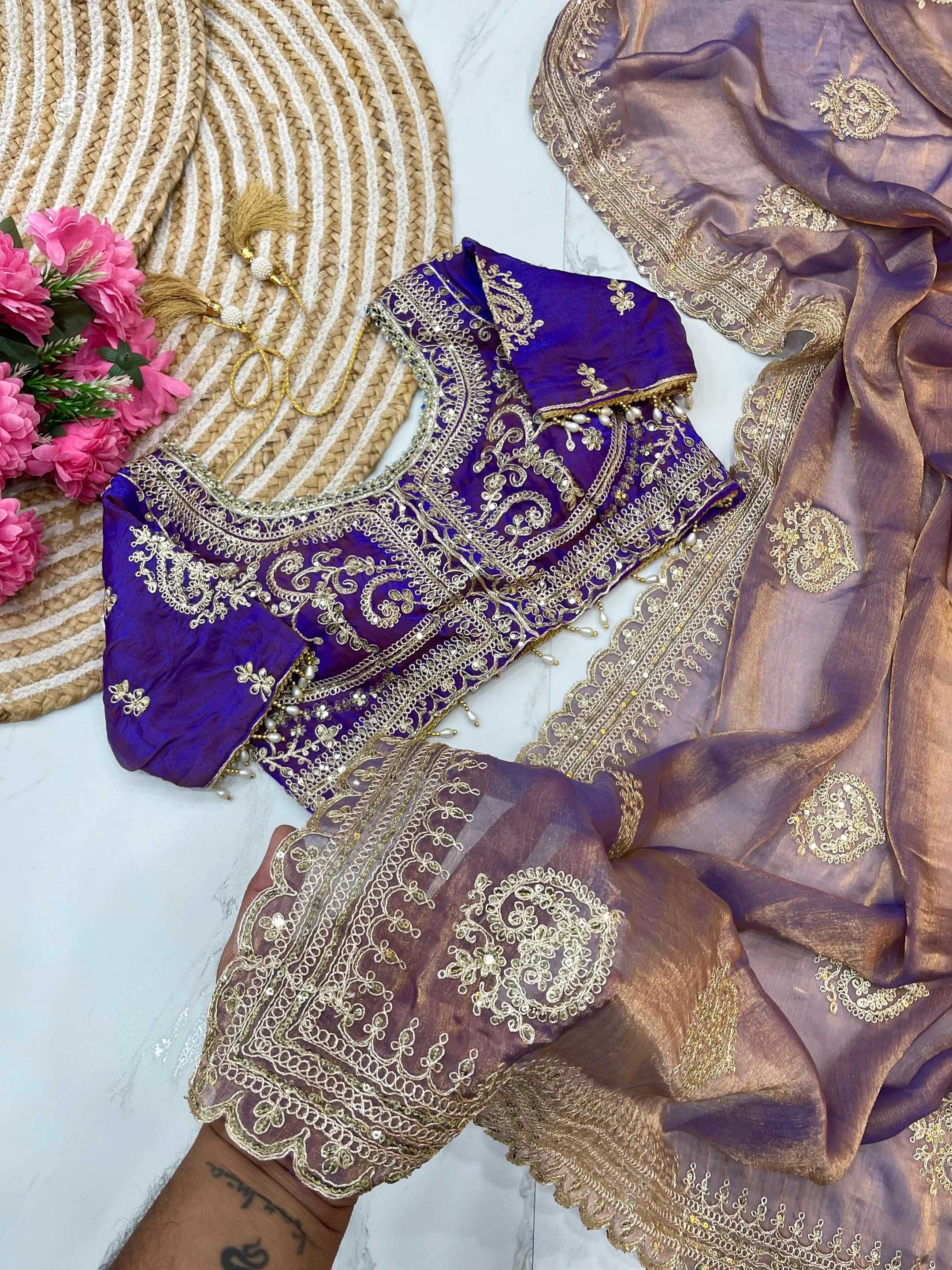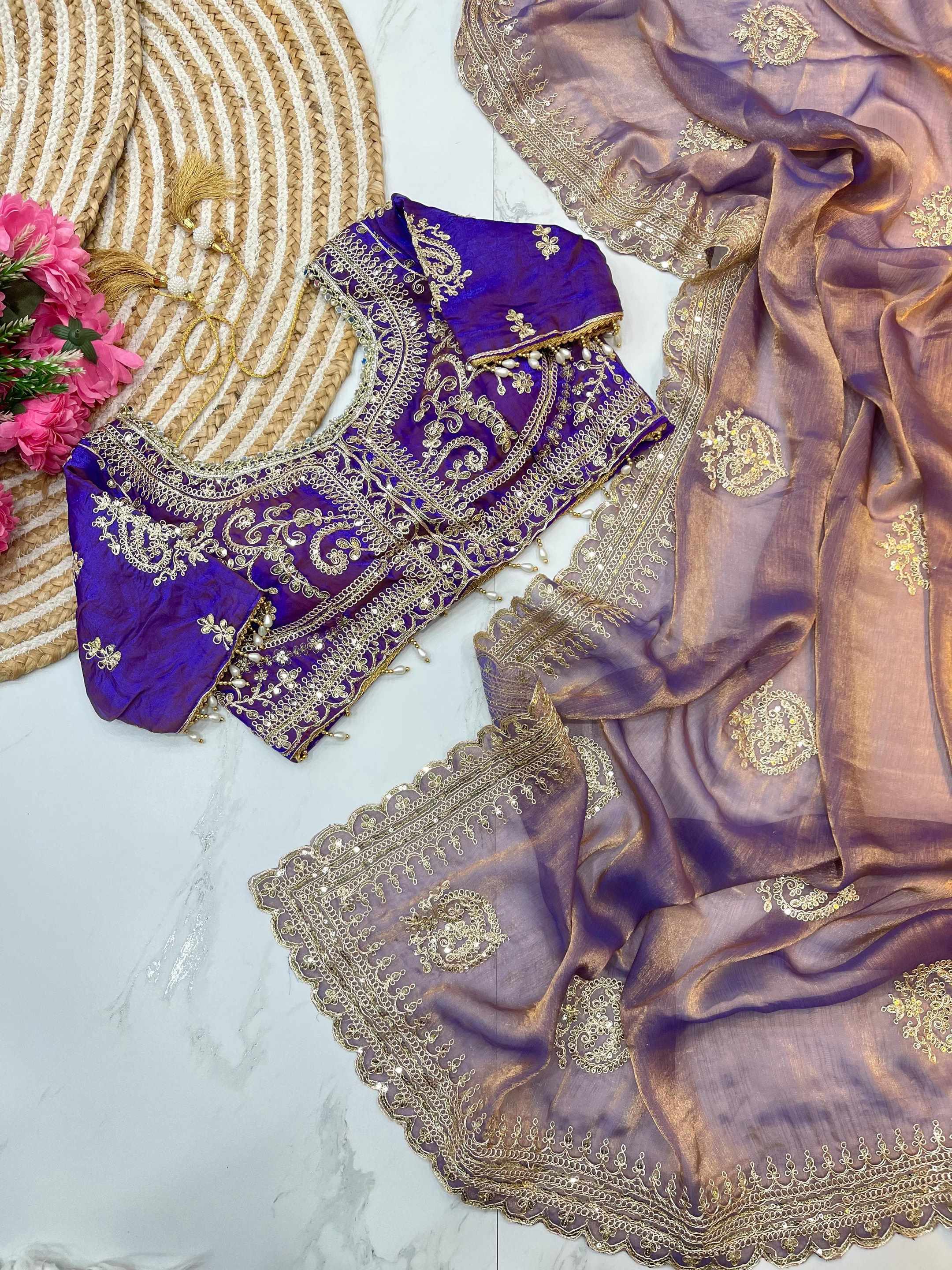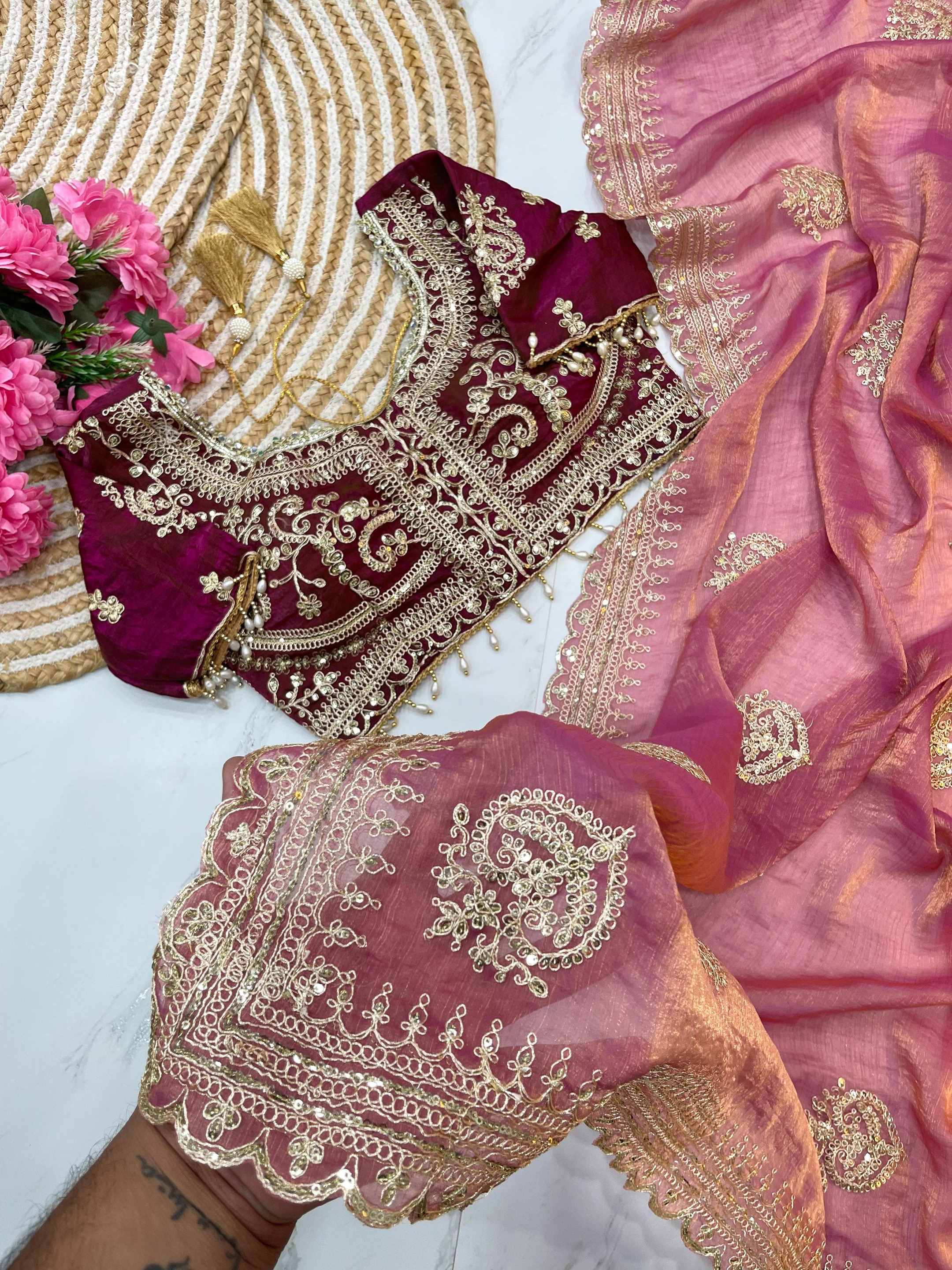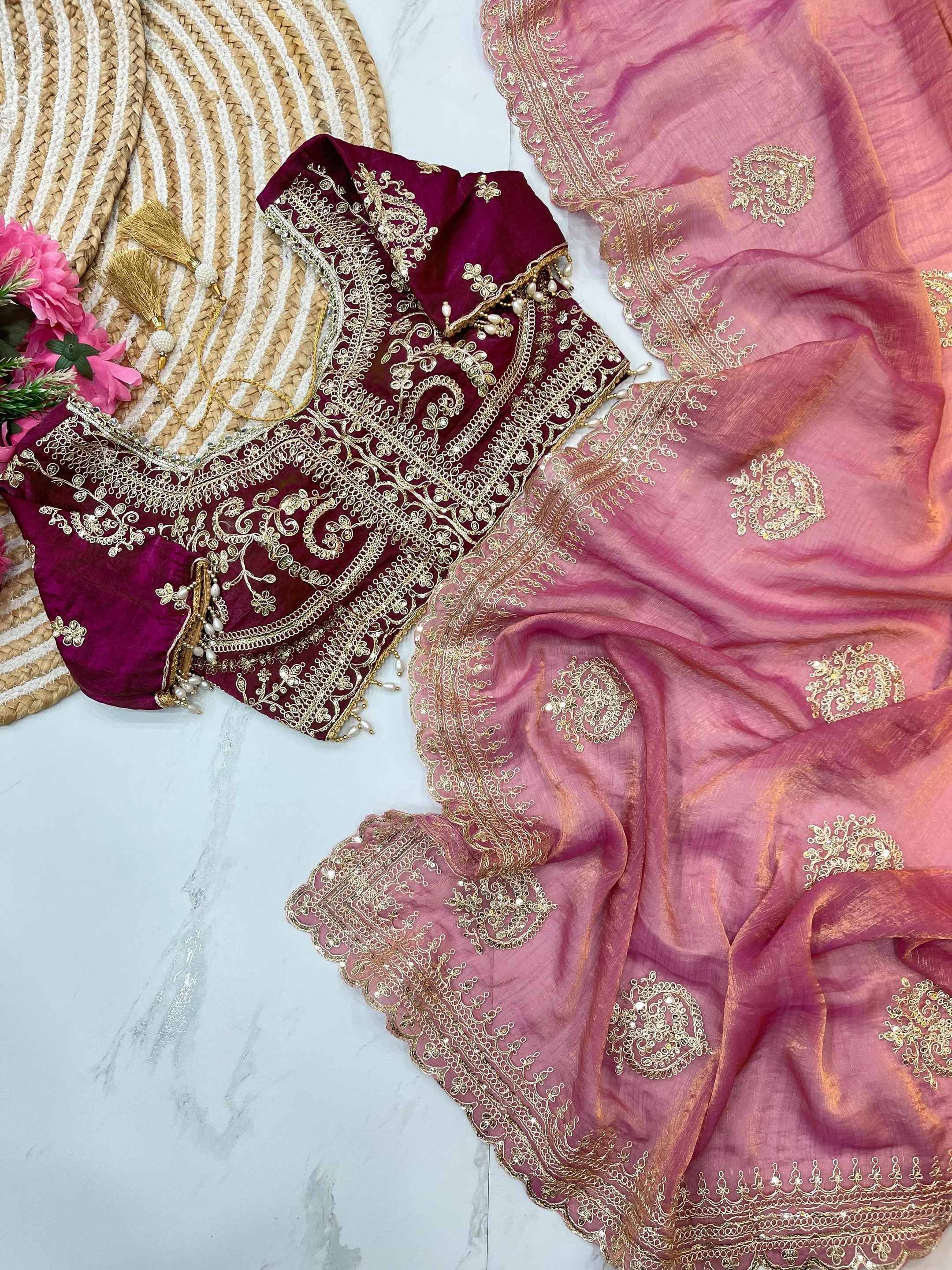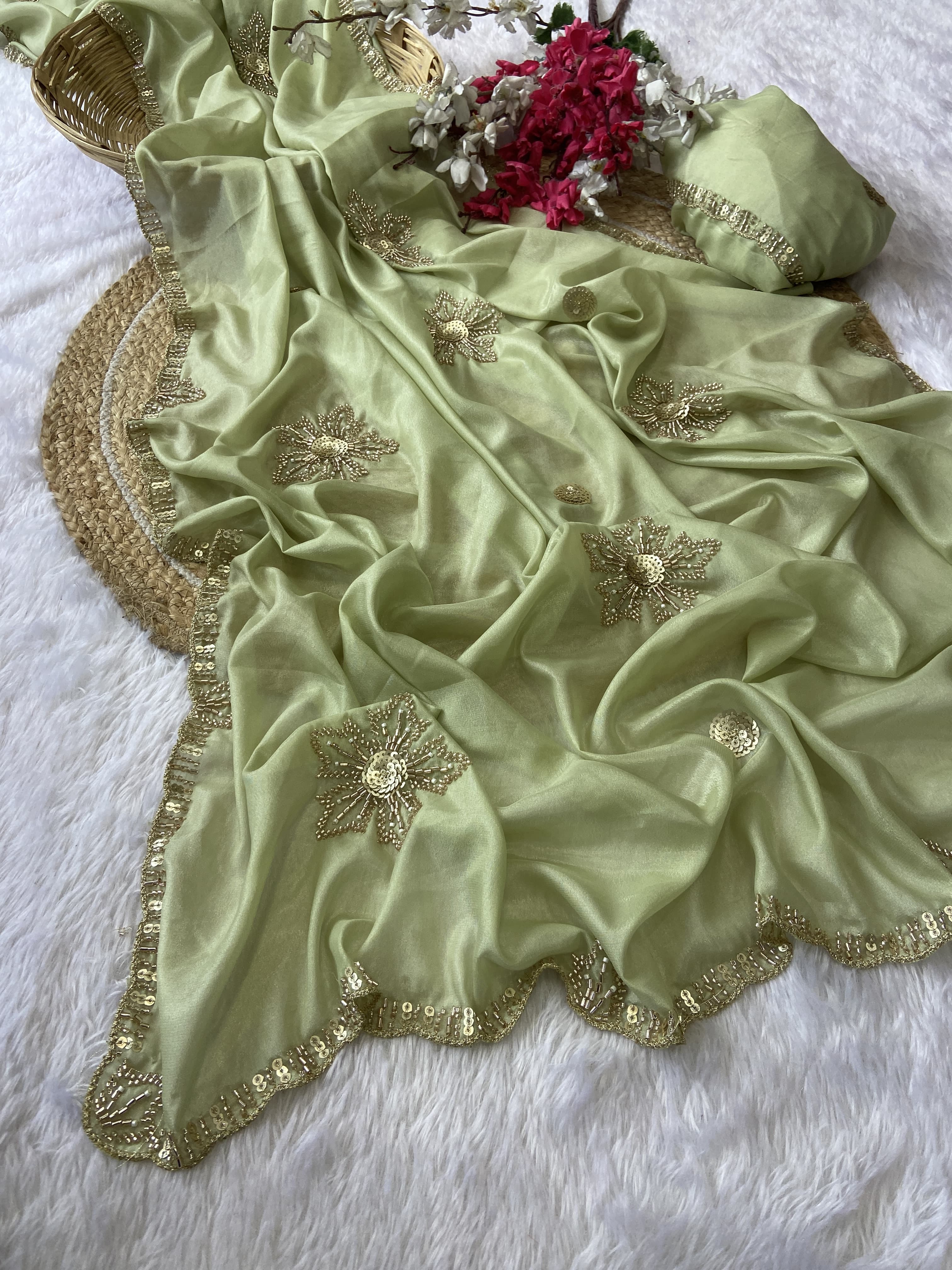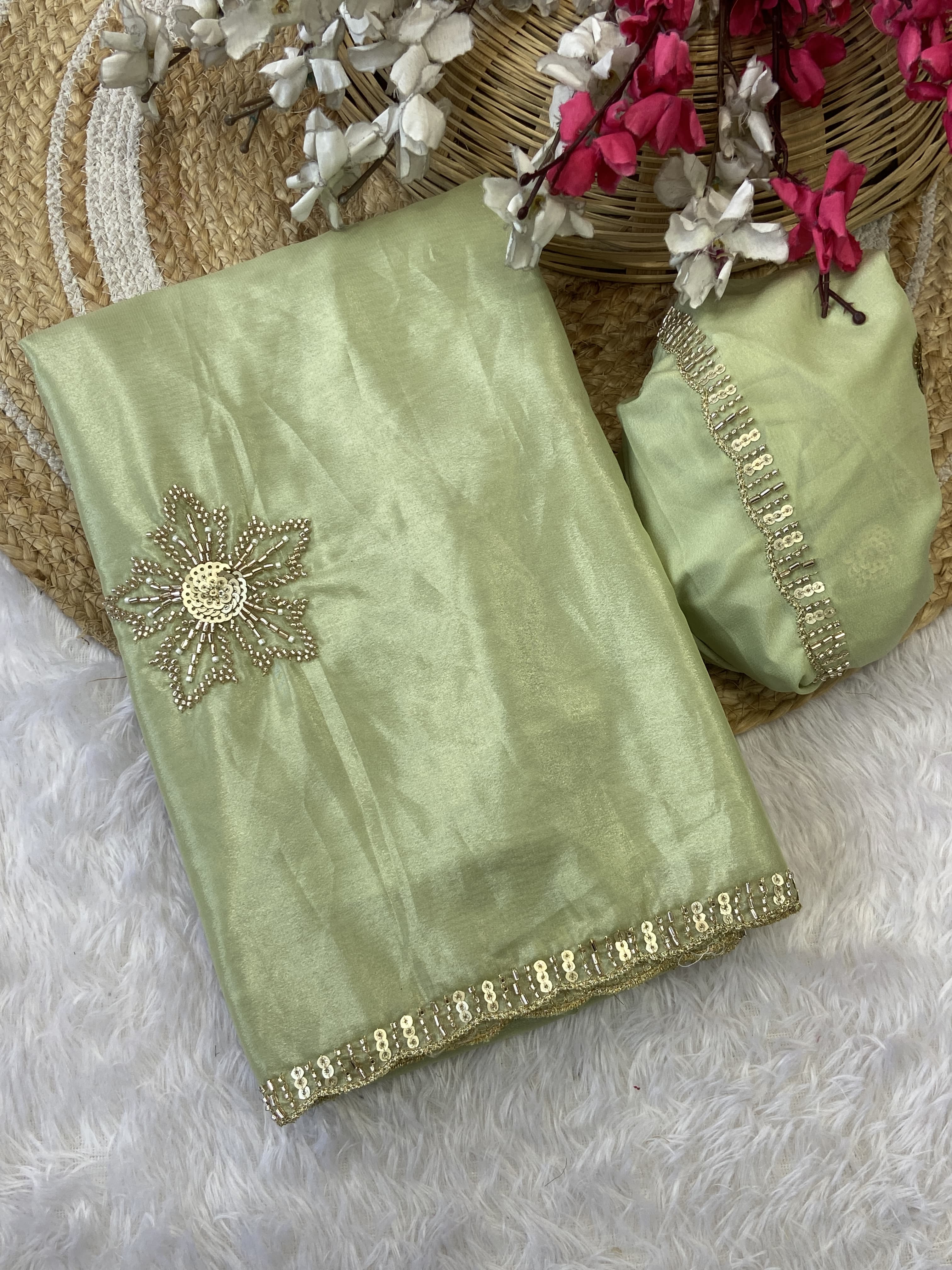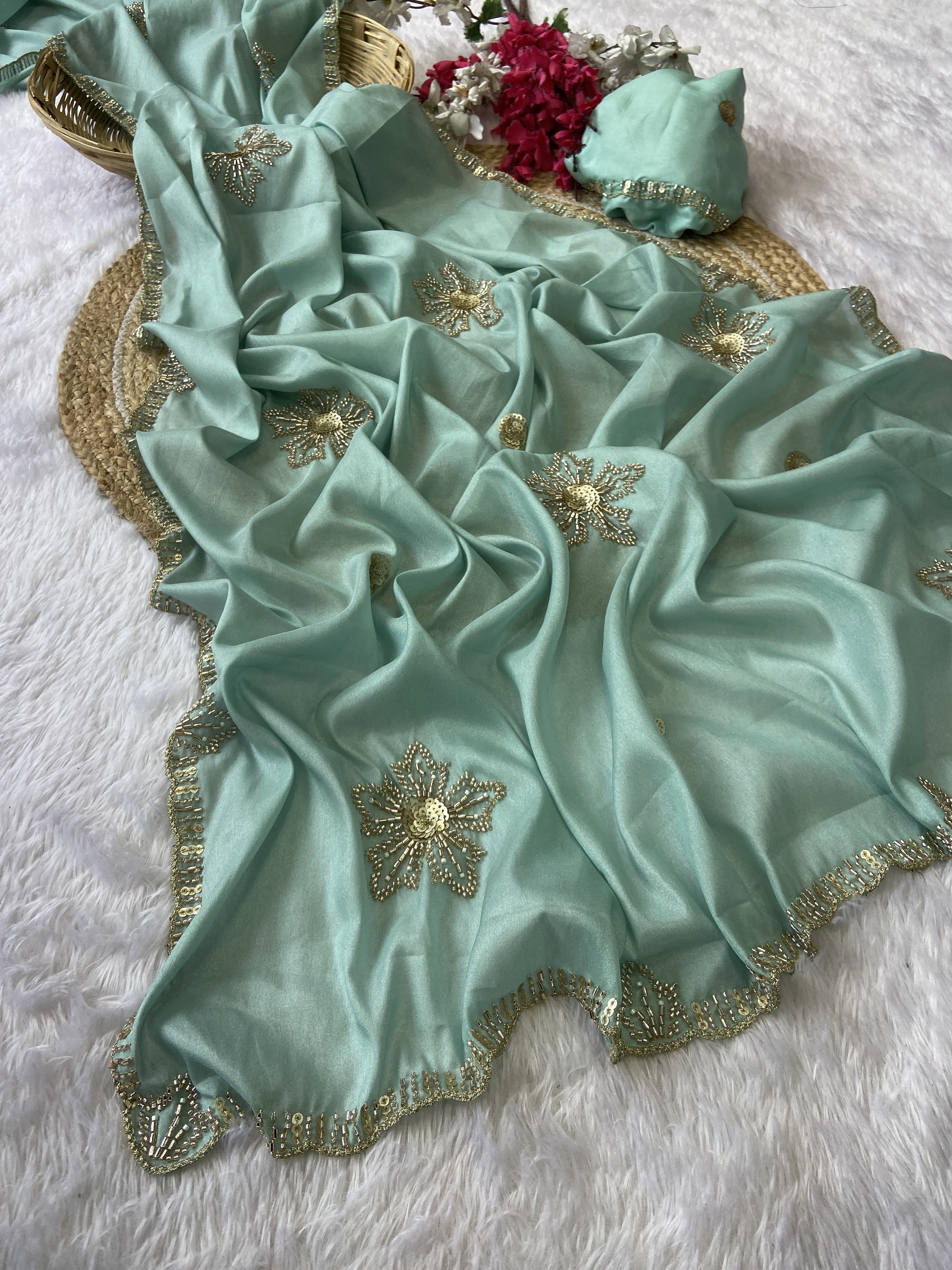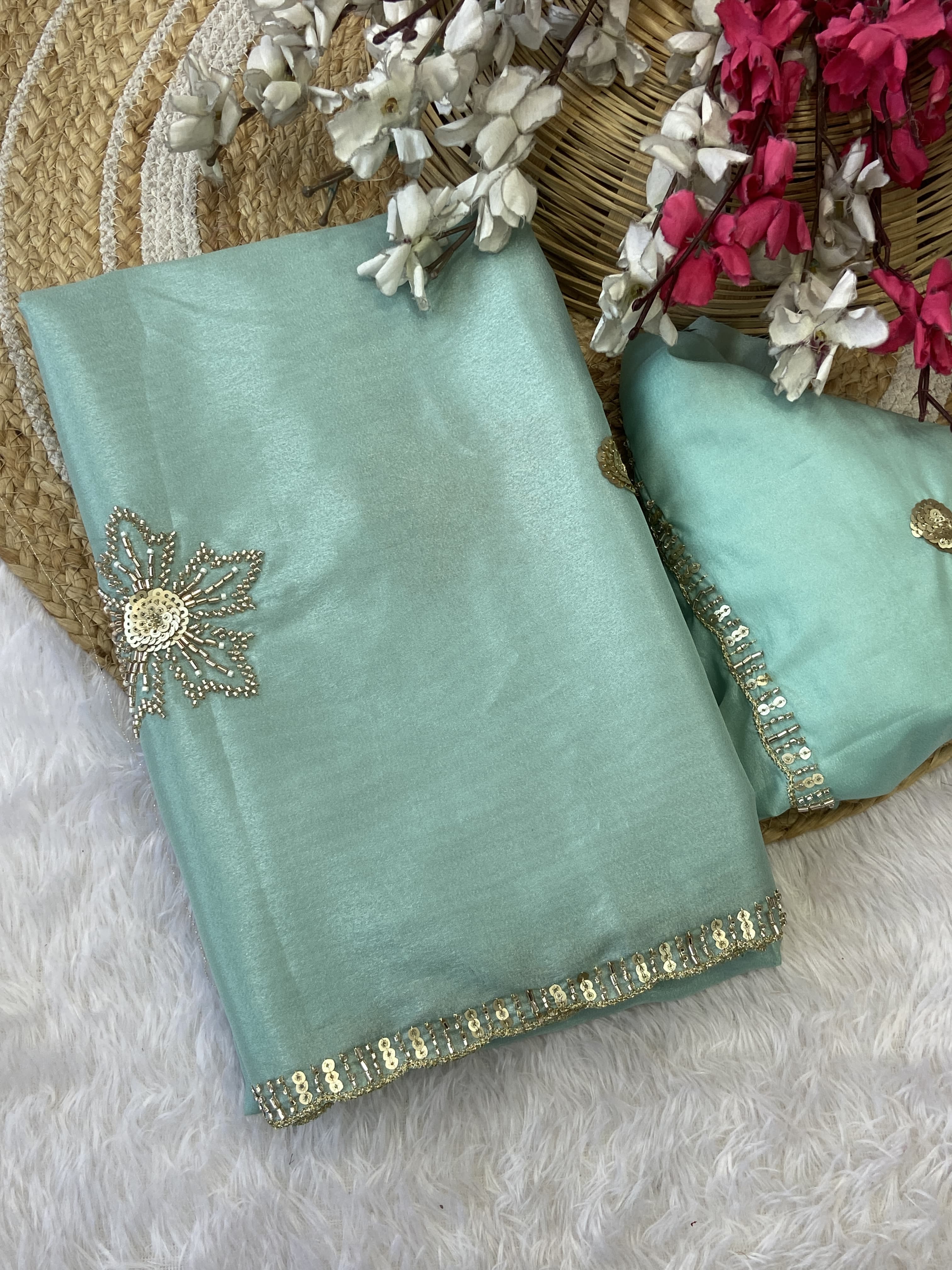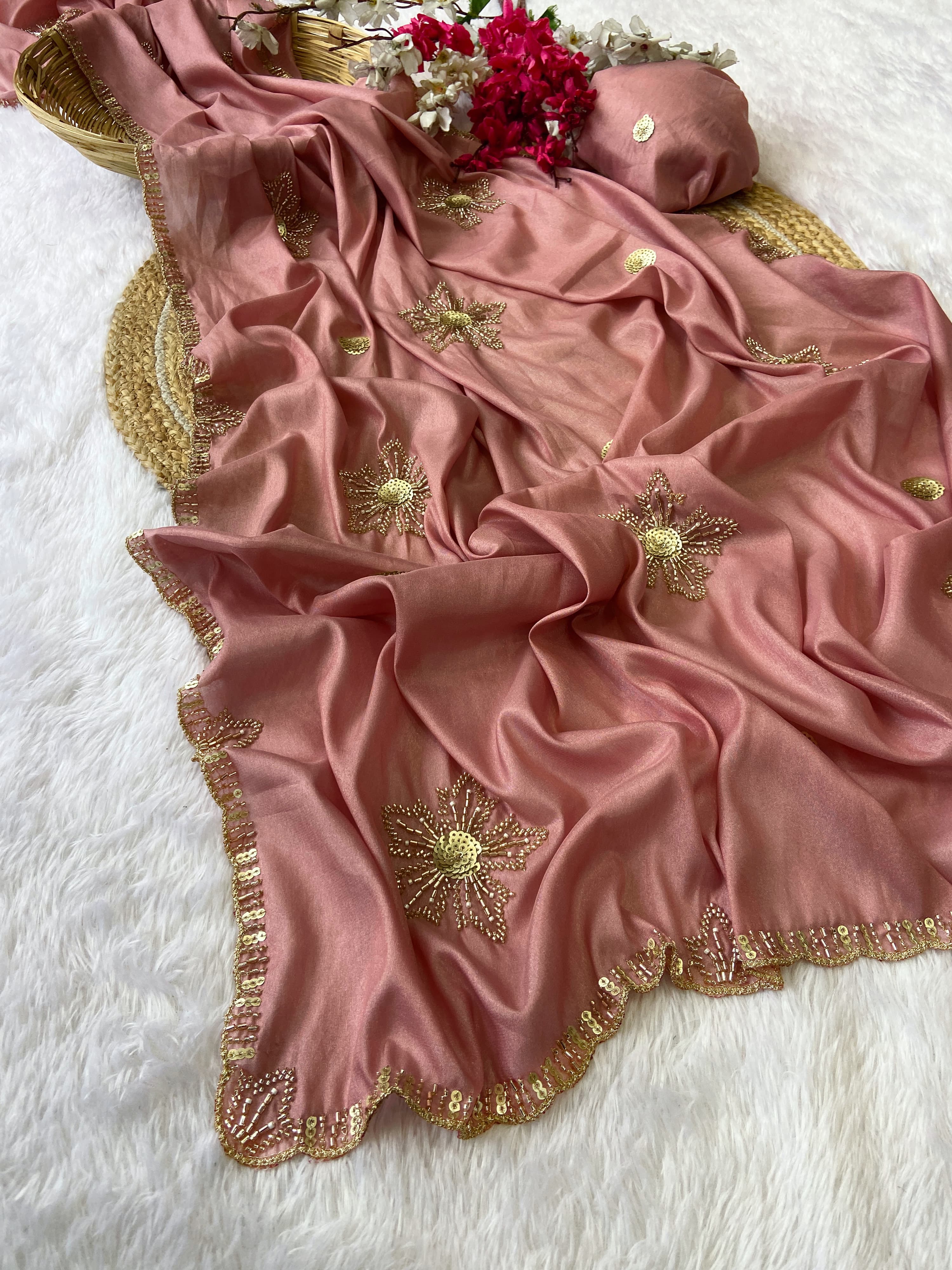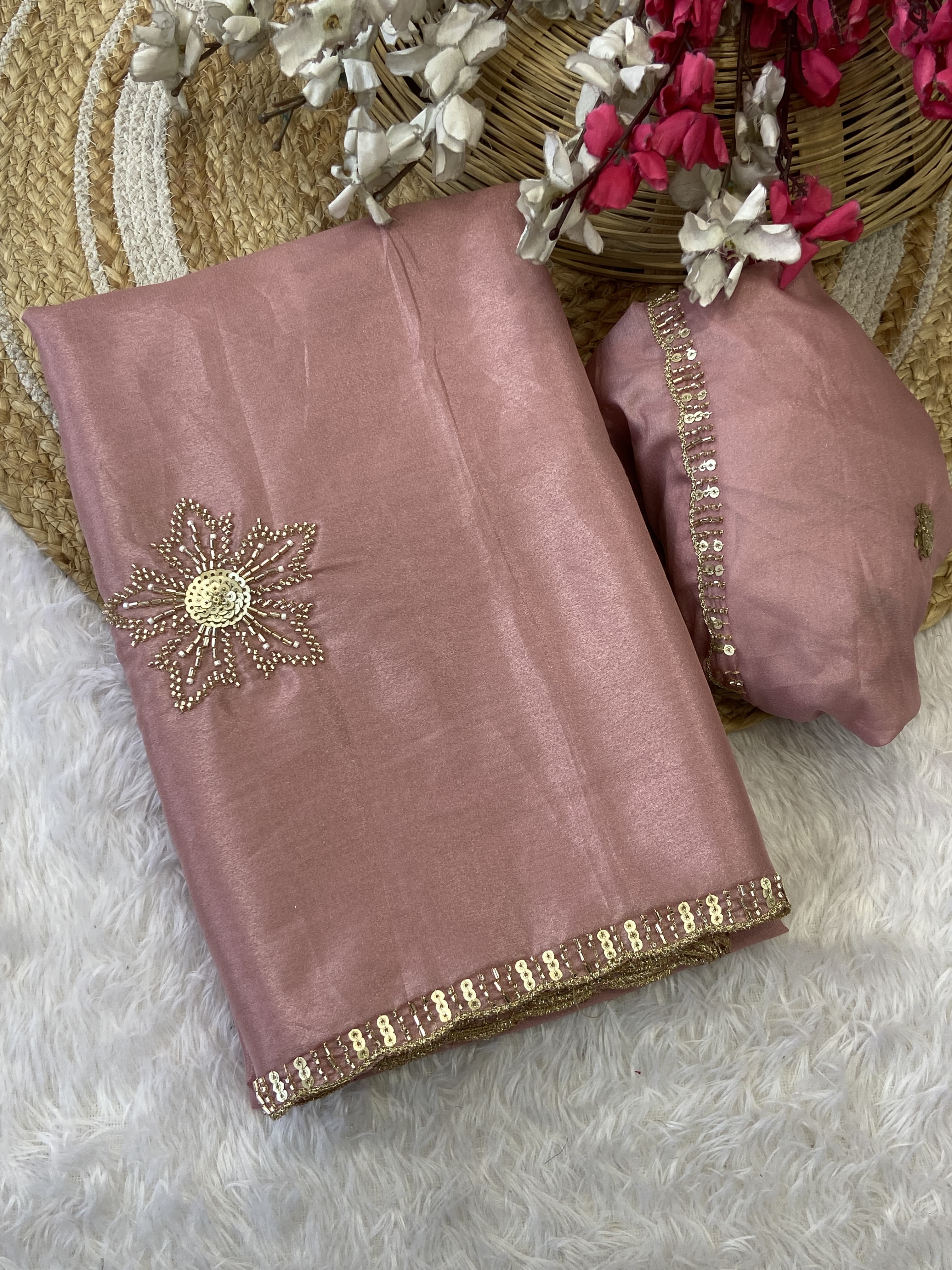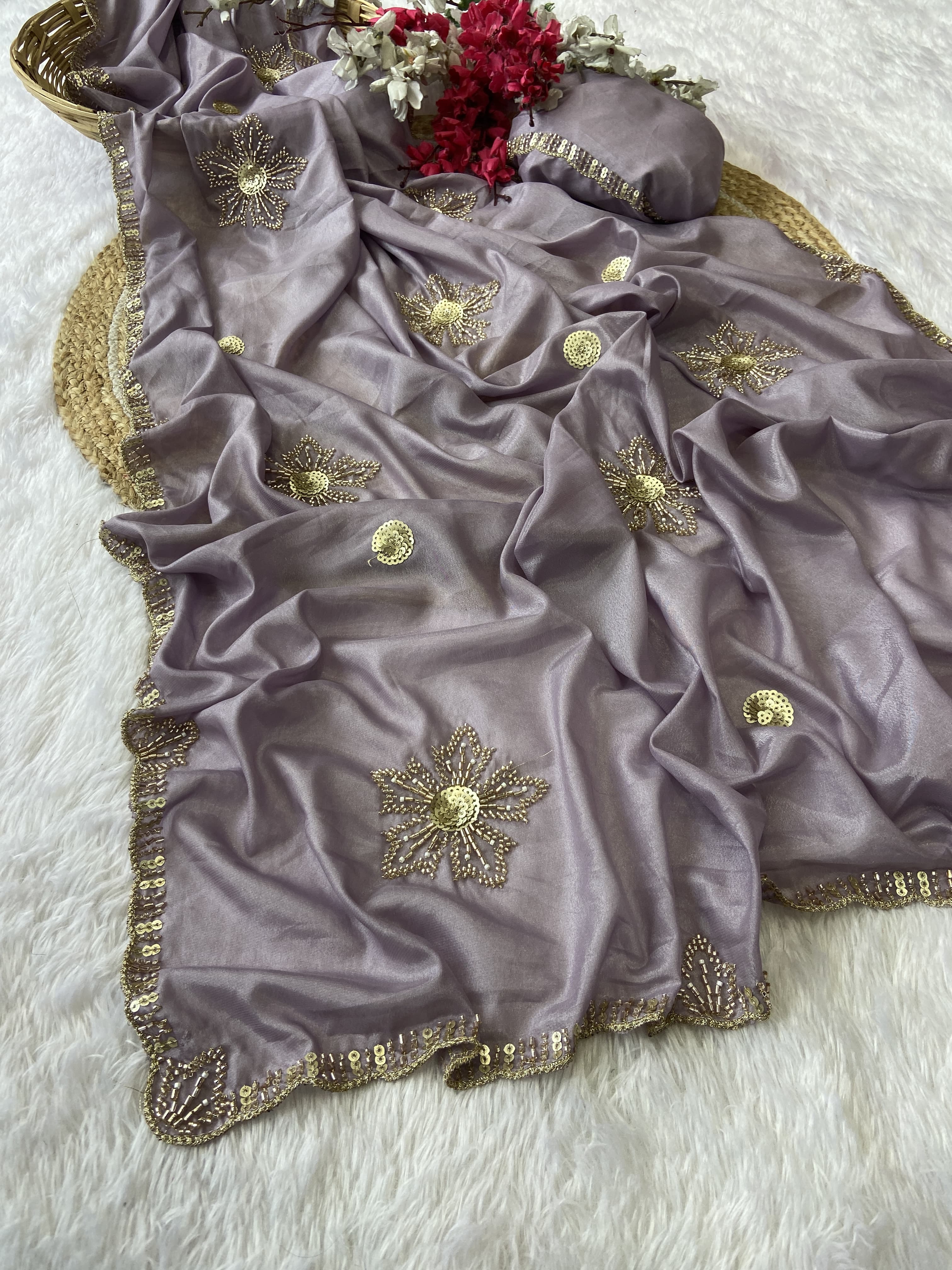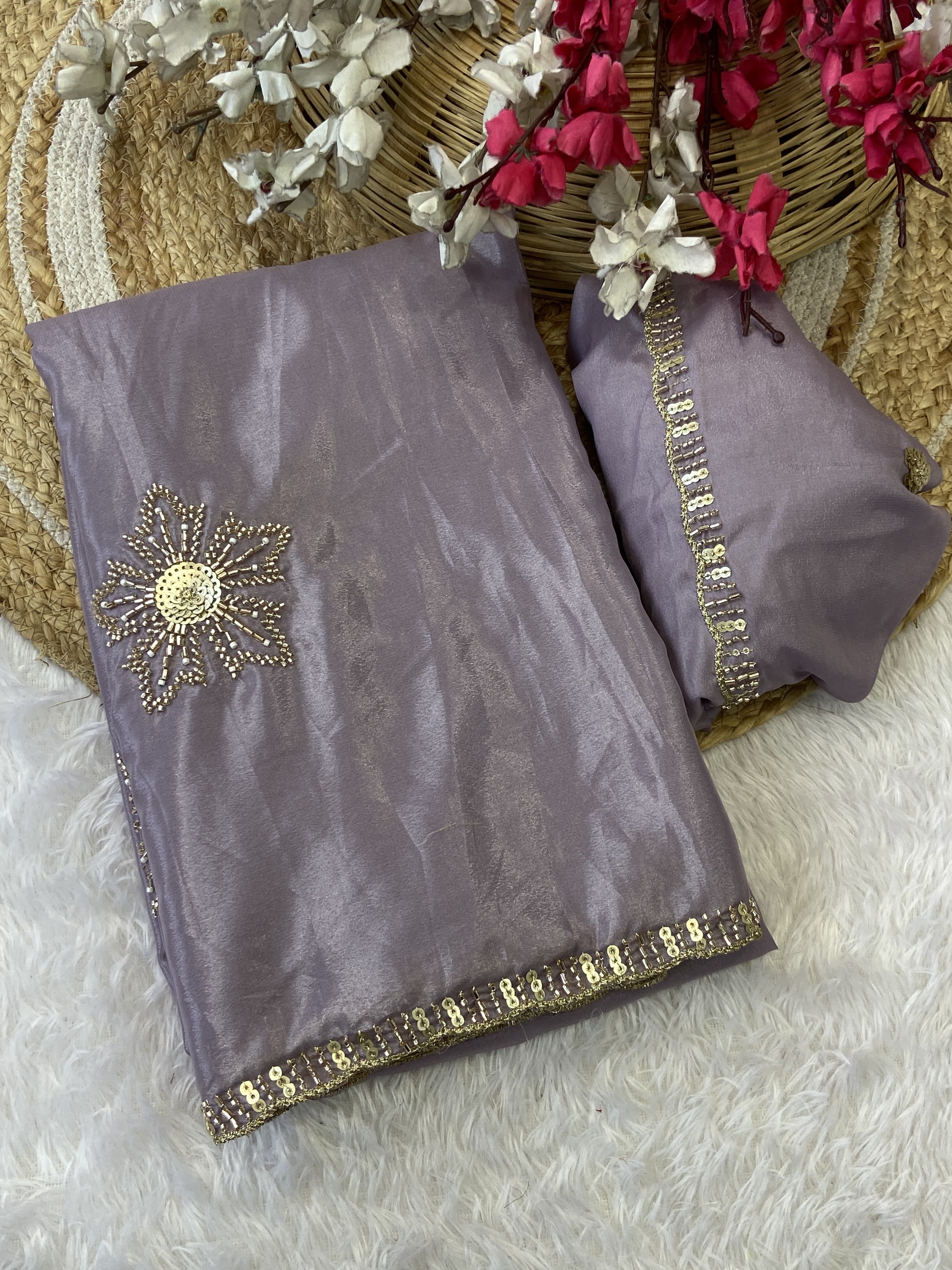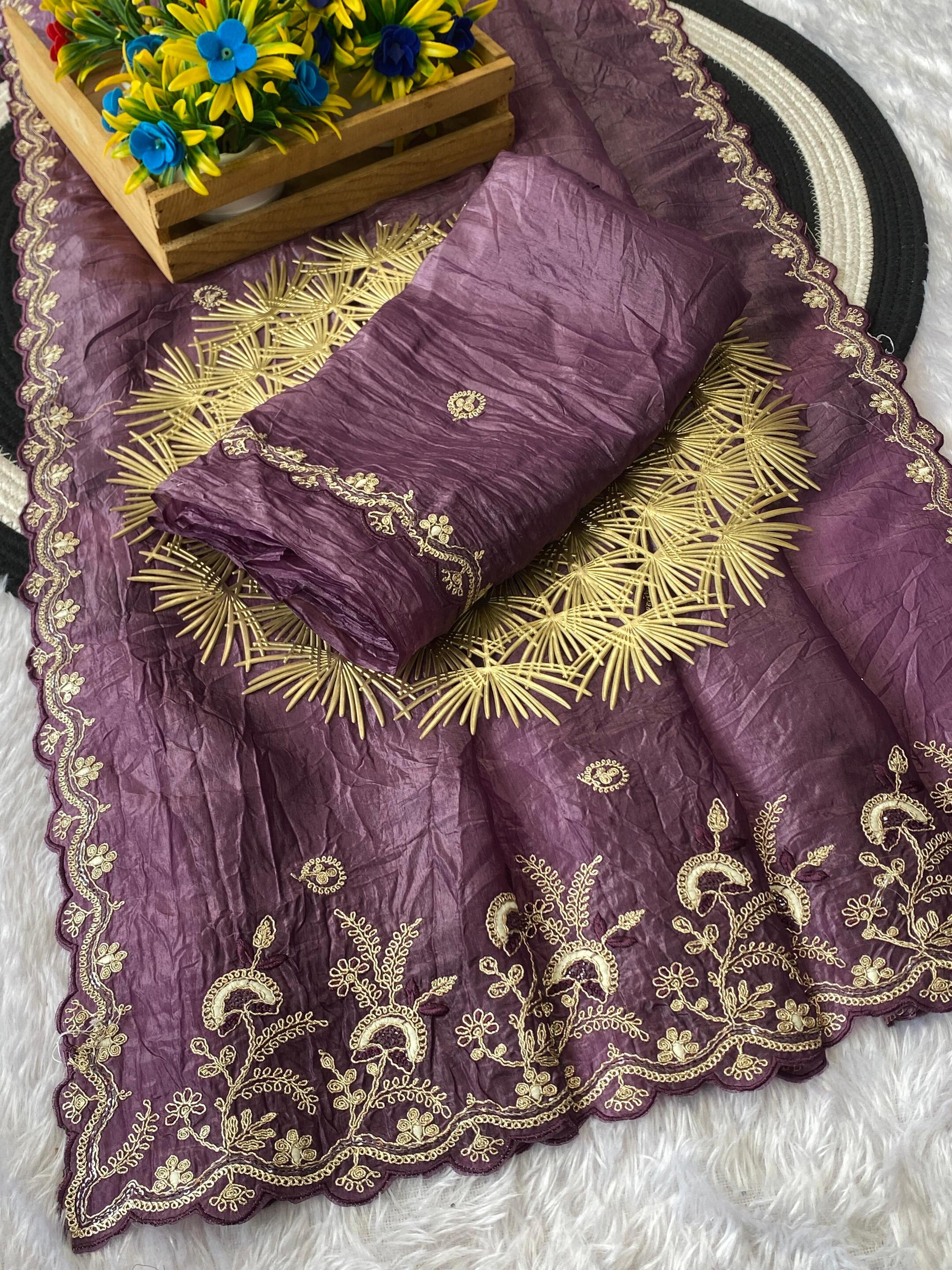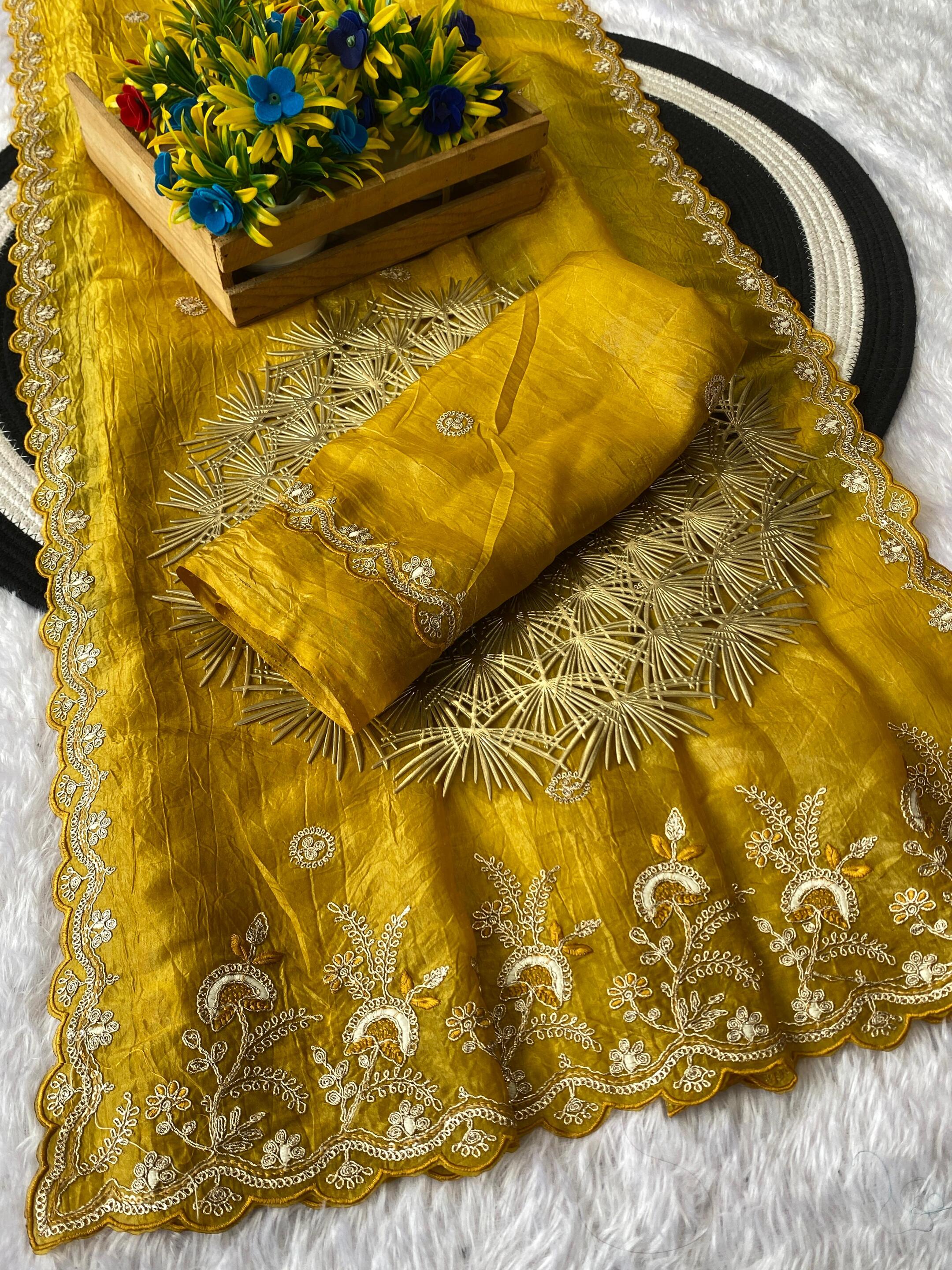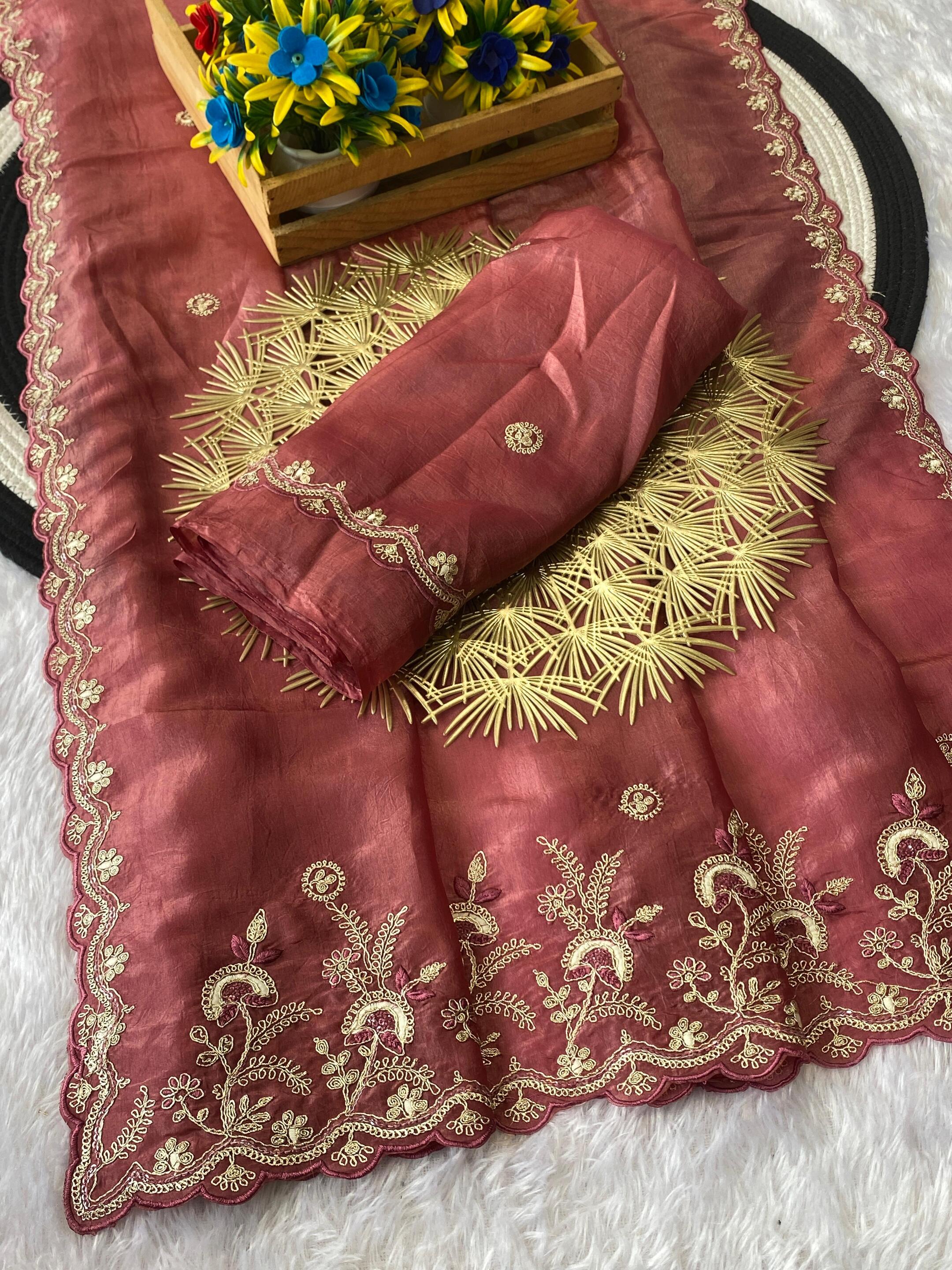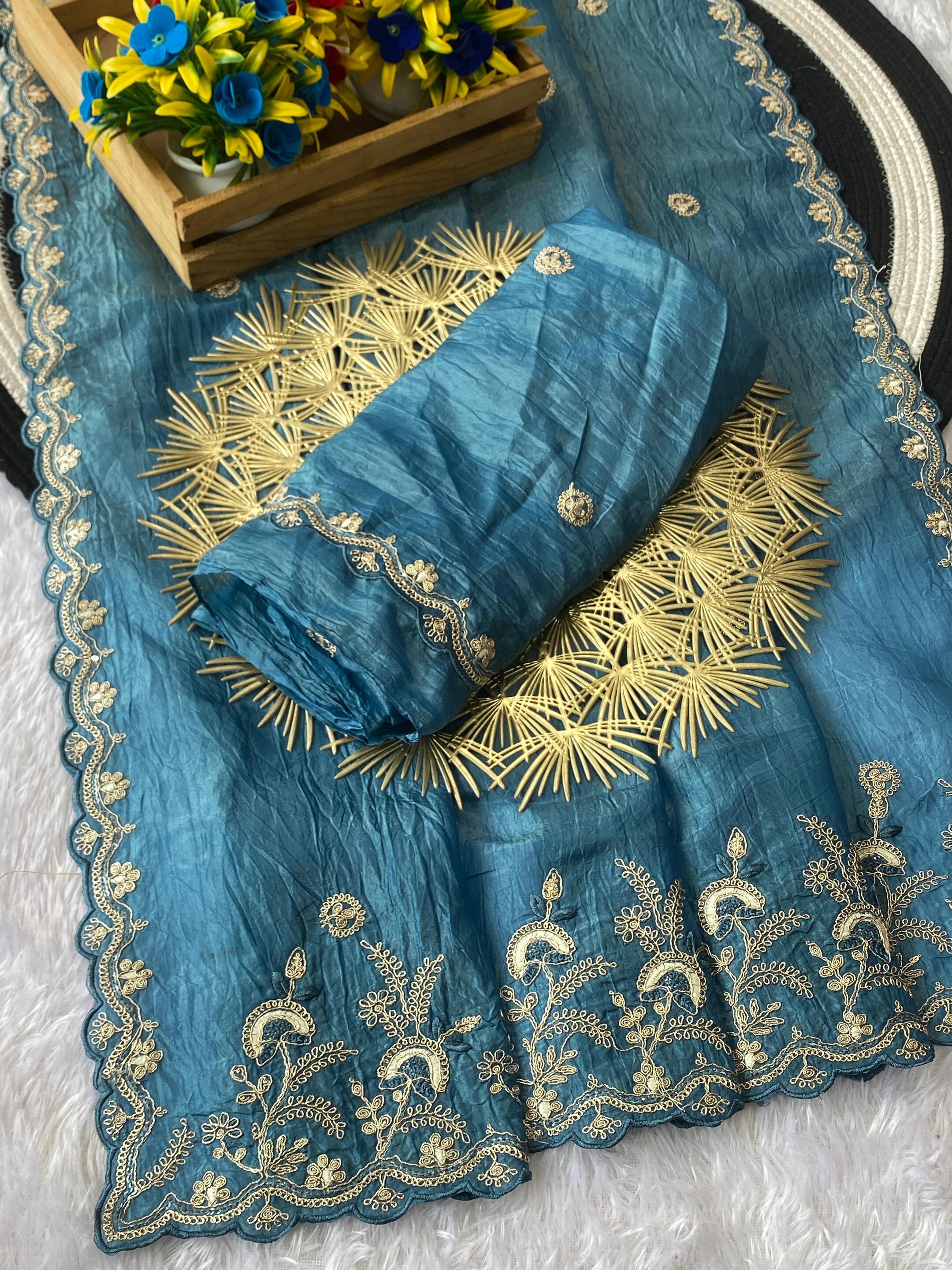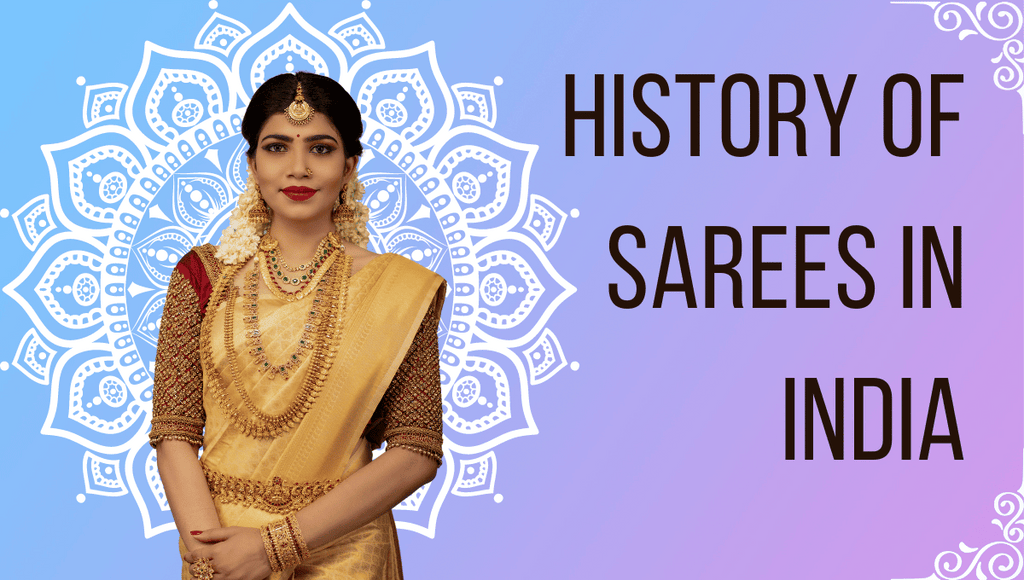
History of Sarees in India

Defined as nine yards of sheer elegance, sarees hold a prominent and unwavering place in the culture and evolving fashion of India. The allure and dazzle of sarees are unparalleled. For centuries women have decked themselves in silk and cotton sarees to establish themselves as fashionable decent elegant women. The trend of saree is profound even today. It’s time to trace back and rekindle ourselves in the everlasting glory of sarees.
The Beginning of the era
Saree is a fashionable garment today that found its place in ancient scriptures as a garment of modesty. Early Jain and Buddhist scriptures mention the sattika, a three-piece garment that evolved over the years to form what is a saree in today’s world. The first mention of sarees can be traced back to 3000 B.C. in a Hindu book, Rig Veda. Moreover, various sculptures post-sixth century portrays draped garments around women. Saree is a magical unstitched garment that has evolved centuries after centuries encapsulating women of all age groups in its charm.
Evolution of saree
The manufacturing of Saree is an art. It encapsulates stories of culture and the people around it. Such is the diversity and versatility of sarees that every region of India has a saree unique to its people and their weavers. The artisans and weavers of Banarasi silk sarees, Kanchipuram, ikat, leheriya, Patola, and various other regional specialties have bought cultural and heritage pride to India.
For centuries women preferred wearing regional handloom weaves. This includes silk, cotton, hand-embroidered, block print, tie-dye, and ikkat textiles. Brocade silk sarees like Banarasi, Kanchipuram, Paithani, Uppada, Bagalpuri, Gadwal, Maheshwari, Chanderi, Mekhela, Eri, Balchuri were highly sought for their unique weaving and cultural reflections. Even today, the popularity of such sarees remains intact amongst women of India.
Saree is well suited for the hot and humid climate of India. Many elderly and mid-aged women still wrap themselves in sarees every day to carry on their chores. Youth and urban women, however, have adapted sleek, stylish, and bold versions of sarees draping those at parties, weddings, and festivities.
Industrialization and evolution of modern trends
Industrialization brought along with huge machinery and introduced the trend of machine-loomed sarees in India. Sarees can be produced in no time over machinery and gave a setback to traditional weavers and artisans. Long-time weaving families are out of work today. While the popularity of the saree is still intact and even more popular today, the demand for party wear, vibrant, printed, and youthful sarees is higher.
With industrialization, synthetic dyes made an official entry into the market. Traders and manufacturers started importing chemical dyes from other countries. The traditional art of obtaining dyes through natural sources like indigo, haldi, and flowers slowly went out of practice. New methods of dyeing were introduced which resulted in printed and woven sarees in unimaginable different ways.
Global Exposure: Making its way across the world
Saree has woven their way across the Globe. And there honestly is no single way of gracing a saree. It’s the beauty of the saree that encapsulates everyone within its beauty and elegance. Despite being a traditional garment, saree today is in no way reserved for anyone. It’s a global style ensemble and is an iconic addition to anyone who wraps themselves in the beauty of a saree.
Today the market for saree is more concentrated in machine-loomed merchandise. Printed, hand as well as machine embroidered sarees in rayon, chiffon, georgette, and net are making rounds. Youths are adorning bold, beautiful, flowy draped sarees at parties and festivals. Saree as a piece of fabric has evolved in multiple brilliant variations.
The old charm of the saree has been revived. A few decades back, it lost its glory a bit amidst adapting to new trends and western civilization. But look how the saree evolved itself. Today, it’s a western style imitated into modern trends to make people look fashionable. The proportion of young women and millennials choosing saree over gowns and other ensembles for a party is increasing.
While traditional handloom sarees were expensive, today sarees are available in a price range of as low as 250 Rs and as high as many lakhs. It’s not hard to find party wear sarees under 1500 today, given the number of giant online stores selling an extensive variety of semi-synthetic and synthetic sarees. Saree as a garment helps bring out modesty and sensuality at the same time. Choosing a saree for your wardrobe might make a worthy investment for sure.
Conclusion
Wrapping up, sarees are here to stay. It sure will change its forms and styles year after year. But the popularity of this unstitched garment bringing out feminine flair amongst women will remain the same. We sure can expect young generations to adapt sarees for their comfort and representation of the style. In this influential world, the saree has an unparalleled potential to uncover.


